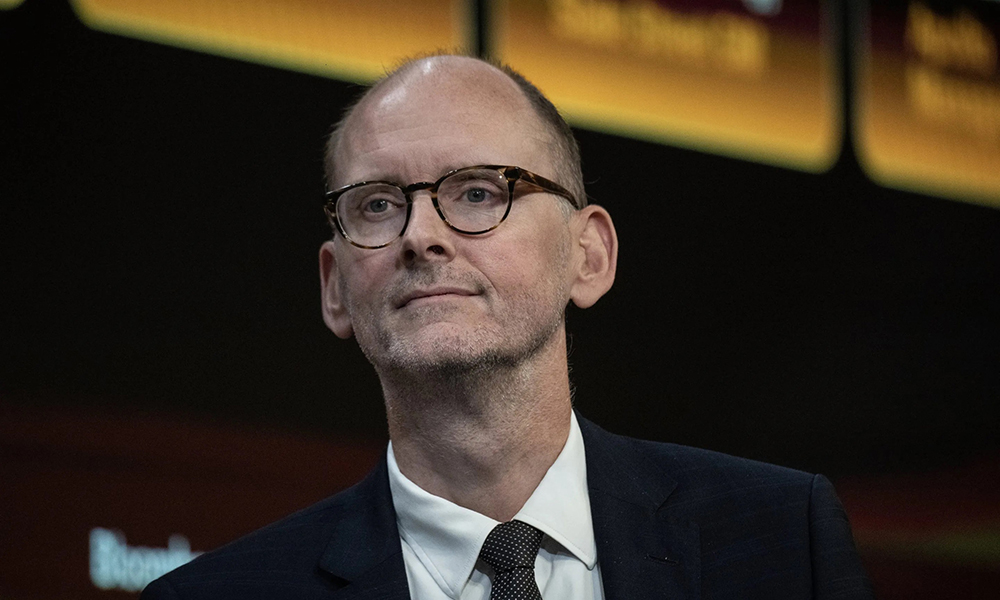
失业率可能会升高,但这是因为劳动力增多,而不是工作岗位减少。
阿波罗全球管理公司首席经济学家托尔斯滕·斯洛克认为,近期失业率上升是由于移民激增扩大了美国的劳动力供应,而非大范围裁员。该公司是全球最大的私募股权公司之一,管理资产达6960亿美元。
根据美国劳工统计局(Bureau of Labor Statistics)的数据,失业率在过去五个月中持续上升,目前已达4.3%。这一趋势引发了人们对于经济衰退即将到来的担忧。失业率上升往往预示着经济衰退,因为公司会通过裁员来削减成本,并为未来的艰难时期做好准备。
然而,正如斯洛克所指出的,并未出现大规模裁员。事实上,今年的裁员情况相对稳定,每月裁员人数大致在150万至160万之间。6月的裁员人数是今年迄今为止最少的。
相反,有更多的人加入了劳动力大军——即便他们当下并未就业。“失业率上升的根源并非裁员,而是由于移民增加导致的劳动力供应上升,”斯洛克在一封电子邮件中写道。
美国国会预算办公室(Congressional Budget Office)的数据显示,2022年,美国的净移民人数达到260万。2023年,这一数字跃升至330万。预计2024年的净移民人数将维持相同水平。
长期以来,在疫情后的劳动力市场紧缺时期,移民填补了劳动力短缺,从而有助于支撑美国经济。移民得以就业、获得薪酬,并将所得用于购买商品和服务,使经济在面临衰退风险时仍能保持正常运转。根据堪萨斯城联邦储备银行(Kansas City Fed)的研究,移民也有助于为过热的劳动力市场降温。然而,堪萨斯城联邦储备银行的研究还表明,移民人数的上升也降低了工资增长。尽管这在短期内有助于控制通货膨胀,但从长期来看,损害了劳动者的收入潜力。
7月公布的最新一轮就业数据引发了经济学家所谓的萨姆规则(Sahm Rule),即如果美国失业率三个月的移动平均值比此前12个月的滚动移动平均值最低点高出0.5个百分点或更多时,经济即将进入衰退。包括斯洛克在内的许多经济学家注意到了这一情况,但并未对此给予重视。
斯洛克说:"萨姆规则是为劳动力需求下降的情况设计的,而非针对移民增加的情况。”
该规则的提出者克劳迪娅·萨姆(Claudia Sahm)对此表示赞同。周三,这位新世纪顾问公司(New Century Advisors)的首席经济学家在为彭博社撰写的一篇专栏文章中解释说,她的规则并没有区分劳动力供应增加和劳动力供应减少的情况,这两种情况都会导致失业率上升,但原因不同。她写道:"一旦工作岗位'赶上'新增的求职者,更多的劳动者能够促使经济加速增长,失业率就会下降。萨姆规则并没有区分这两种动态,而且当劳动力迅速扩张时,这可能看起来更像是不祥之兆。”
上个月,当被问及萨姆规则时,美联储主席杰罗姆·鲍威尔(Jerome Powell)暗示了他对此的看法。鲍威尔称这一规则为“统计规律”,而不是“经济规律(告诉你某事必然发生)”。
斯洛克引用了鲍威尔的建议,即在正确评估经济时应考虑多个指标,而不是仅看一个指标。斯洛克写道,鲍威尔“表示,我们应该关注数据的整体性,而不仅仅是一个数据点。综合所有数据来看,经济依然稳健。”
斯洛克在上周发表的一篇博文中提到,消费者在航空旅行和餐饮等方面的支出水平较高,这表明经济正在放缓,但并未崩溃,而是正朝着软着陆的方向发展。然而,消费者行为仍有一些显著变化,预示着未来可能会面临更严峻的经济形势。在过去的两个月里,零售支出一直摇摆不定,第二季度信用卡违约率上升,这两者对于美国消费驱动型经济的健康发展不是好兆头。(财富中文网)
译者:中慧言-王芳
失业率可能会升高,但这是因为劳动力增多,而不是工作岗位减少。
阿波罗全球管理公司首席经济学家托尔斯滕·斯洛克认为,近期失业率上升是由于移民激增扩大了美国的劳动力供应,而非大范围裁员。该公司是全球最大的私募股权公司之一,管理资产达6960亿美元。
根据美国劳工统计局(Bureau of Labor Statistics)的数据,失业率在过去五个月中持续上升,目前已达4.3%。这一趋势引发了人们对于经济衰退即将到来的担忧。失业率上升往往预示着经济衰退,因为公司会通过裁员来削减成本,并为未来的艰难时期做好准备。
然而,正如斯洛克所指出的,并未出现大规模裁员。事实上,今年的裁员情况相对稳定,每月裁员人数大致在150万至160万之间。6月的裁员人数是今年迄今为止最少的。
相反,有更多的人加入了劳动力大军——即便他们当下并未就业。“失业率上升的根源并非裁员,而是由于移民增加导致的劳动力供应上升,”斯洛克在一封电子邮件中写道。
美国国会预算办公室(Congressional Budget Office)的数据显示,2022年,美国的净移民人数达到260万。2023年,这一数字跃升至330万。预计2024年的净移民人数将维持相同水平。
长期以来,在疫情后的劳动力市场紧缺时期,移民填补了劳动力短缺,从而有助于支撑美国经济。移民得以就业、获得薪酬,并将所得用于购买商品和服务,使经济在面临衰退风险时仍能保持正常运转。根据堪萨斯城联邦储备银行(Kansas City Fed)的研究,移民也有助于为过热的劳动力市场降温。然而,堪萨斯城联邦储备银行的研究还表明,移民人数的上升也降低了工资增长。尽管这在短期内有助于控制通货膨胀,但从长期来看,损害了劳动者的收入潜力。
7月公布的最新一轮就业数据引发了经济学家所谓的萨姆规则(Sahm Rule),即如果美国失业率三个月的移动平均值比此前12个月的滚动移动平均值最低点高出0.5个百分点或更多时,经济即将进入衰退。包括斯洛克在内的许多经济学家注意到了这一情况,但并未对此给予重视。
斯洛克说:"萨姆规则是为劳动力需求下降的情况设计的,而非针对移民增加的情况。”
该规则的提出者克劳迪娅·萨姆(Claudia Sahm)对此表示赞同。周三,这位新世纪顾问公司(New Century Advisors)的首席经济学家在为彭博社撰写的一篇专栏文章中解释说,她的规则并没有区分劳动力供应增加和劳动力供应减少的情况,这两种情况都会导致失业率上升,但原因不同。她写道:"一旦工作岗位'赶上'新增的求职者,更多的劳动者能够促使经济加速增长,失业率就会下降。萨姆规则并没有区分这两种动态,而且当劳动力迅速扩张时,这可能看起来更像是不祥之兆。”
上个月,当被问及萨姆规则时,美联储主席杰罗姆·鲍威尔(Jerome Powell)暗示了他对此的看法。鲍威尔称这一规则为“统计规律”,而不是“经济规律(告诉你某事必然发生)”。
斯洛克引用了鲍威尔的建议,即在正确评估经济时应考虑多个指标,而不是仅看一个指标。斯洛克写道,鲍威尔“表示,我们应该关注数据的整体性,而不仅仅是一个数据点。综合所有数据来看,经济依然稳健。”
斯洛克在上周发表的一篇博文中提到,消费者在航空旅行和餐饮等方面的支出水平较高,这表明经济正在放缓,但并未崩溃,而是正朝着软着陆的方向发展。然而,消费者行为仍有一些显著变化,预示着未来可能会面临更严峻的经济形势。在过去的两个月里,零售支出一直摇摆不定,第二季度信用卡违约率上升,这两者对于美国消费驱动型经济的健康发展不是好兆头。(财富中文网)
译者:中慧言-王芳
The unemployment rate may be higher, but it’s because there are more workers, not fewer jobs.
The recent rise in unemployment is the result of an immigration surge that has expanded the labor supply in the U.S., rather than widespread job cuts, according to Apollo Global Management chief economist Torsten Slok. Apollo is one of the world’s largest private equity firms with $696 billion in assets under management.
According to data from the Bureau of Labor Statistics, the unemployment rate has increased for the past five months to its current level of 4.3%. That trend led to concerns a recession was on the horizon. A rise in the unemployment rate often presages a recession, as companies lay off workers in an effort to cut costs and brace themselves for tough times ahead.
However, as Slok points out, there haven’t been mass layoffs. In fact, layoffs have been relatively flat for the year, hovering between roughly 1.5 million to 1.6 million a month. June had the lowest number of layoffs so far this year.
Instead there are more people joining the labor force—even if they aren’t working at the moment. “The source of the rise in the unemployment rate is not job cuts but a rise in labor supply because of rising immigration,” Slok wrote in an email.
In 2022, net immigration to the U.S. amounted to 2.6 million people, according to the Congressional Budget Office. In 2023, that number jumped to 3.3 million. Forecasts for 2024 expect the same levels of net immigration.
For a long time immigration helped prop up the U.S. economy by filling labor shortages during the tight labor market in the aftermath of the pandemic. Immigrants were employed, getting paid, and spending that money on goods and services, keeping the economy chugging along when it risked faltering. Immigrants also helped cool an overheated labor market, according to research from the Kansas City Fed. However, the uptick in immigration also reduced wage growth, according to the Kansas City Fed’s research, which while helpful to keep inflation from getting out of hand in the short term, harms workers’ earning potential over the long term.
The most recent round of employment data released in July triggered what economists call the Sahm Rule, which states that if the three-month rolling average of the unemployment rate is at least 0.5% higher than the 12-month low, the economy is at the start of a recession. A fact that many economists, Slok among them, noticed yet brushed aside.
“The Sahm Rule was designed for a decline in labor demand, not a rise in immigration,” Slok said.
Claudia Sahm, the inventor of the rule, agreed. On Wednesday in an op-ed for Bloomberg, the chief economist at New Century Advisors explained that her rule doesn’t distinguish between a rise in labor supply and a reduction in labor supply, which both raise the unemployment rate but for different reasons. “The rate will decrease once the jobs ‘catch up’ with the new job seekers and more workers allow the economy to grow more,” she wrote. “The Sahm Rule does not distinguish between these two dynamics, and can look more ominous when the labor force is expanding rapidly.”
When asked about the Sahm Rule last month, Federal Reserve Chair Jerome Powell hinted at her points. Powell called the rule a “statistical regularity” and not “an economic rule where it’s telling you something must happen.”
Slok cited Powell’s recommendation to look at more than just a single metric to properly assess the economy. Powell “said we should focus on the totality of the data, not just on one data point,” Slok wrote. “And the totality of the data still shows an economy that is solid.”
In a blog post published last week, Slok cited high levels of consumer spending on purchases like air travel and restaurants as signs the economy was slowing, but not cratering, and headed for a soft landing. Yet there are still some notable changes in consumer behavior that indicate tougher economic times could lie ahead. Retail spending has been wobbly in the past two months, and credit card delinquencies rose through the second quarter, neither of which bode well for the health of the U.S.’s consumer-driven economy.






